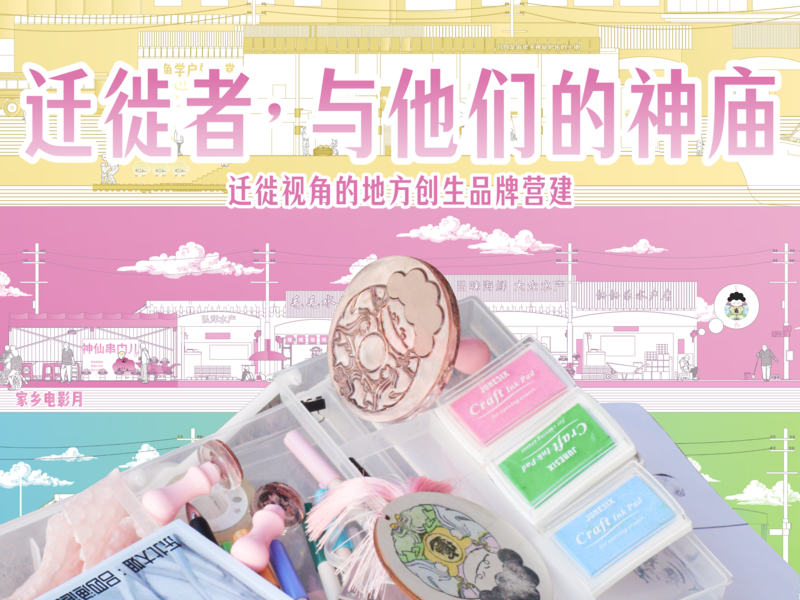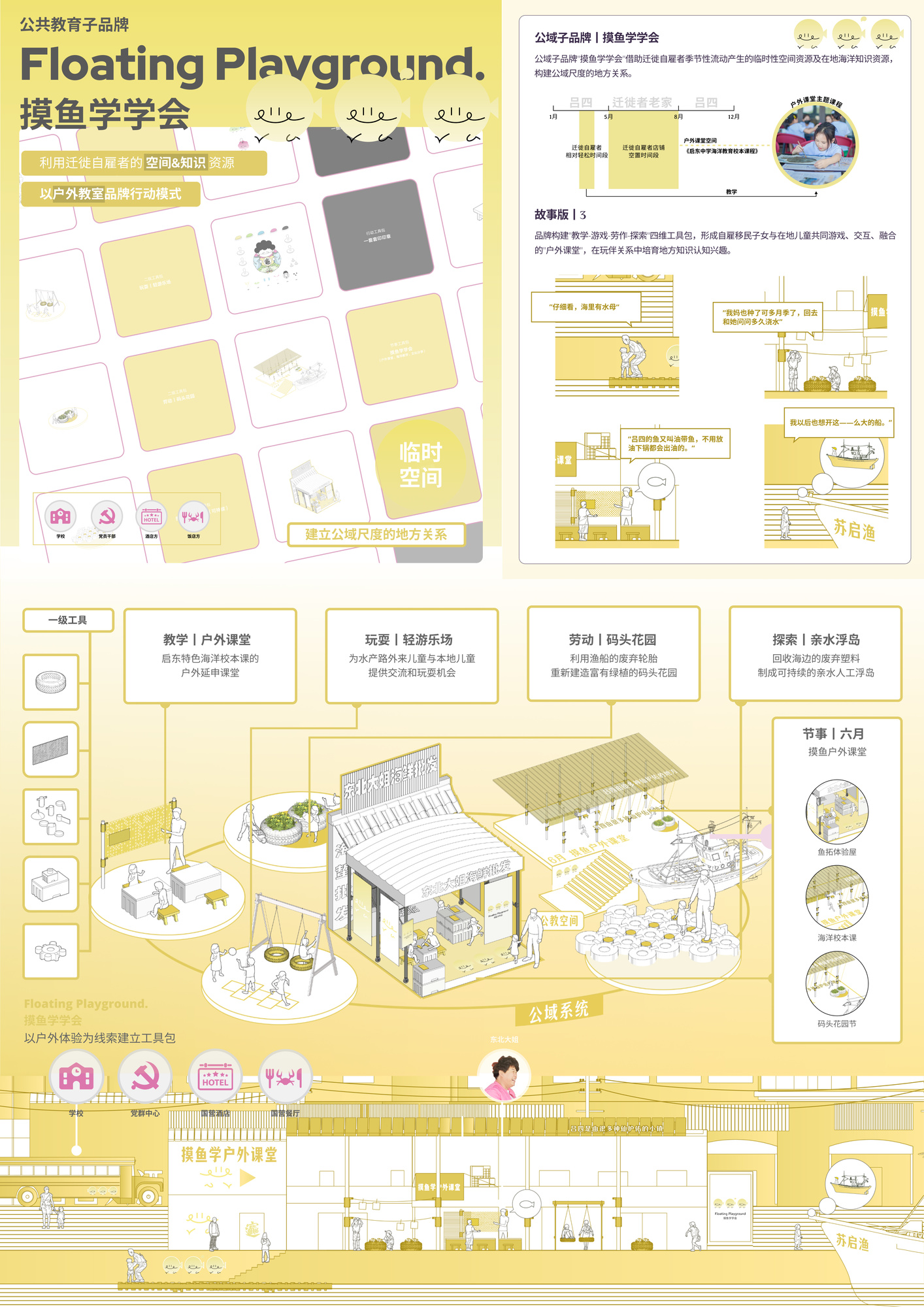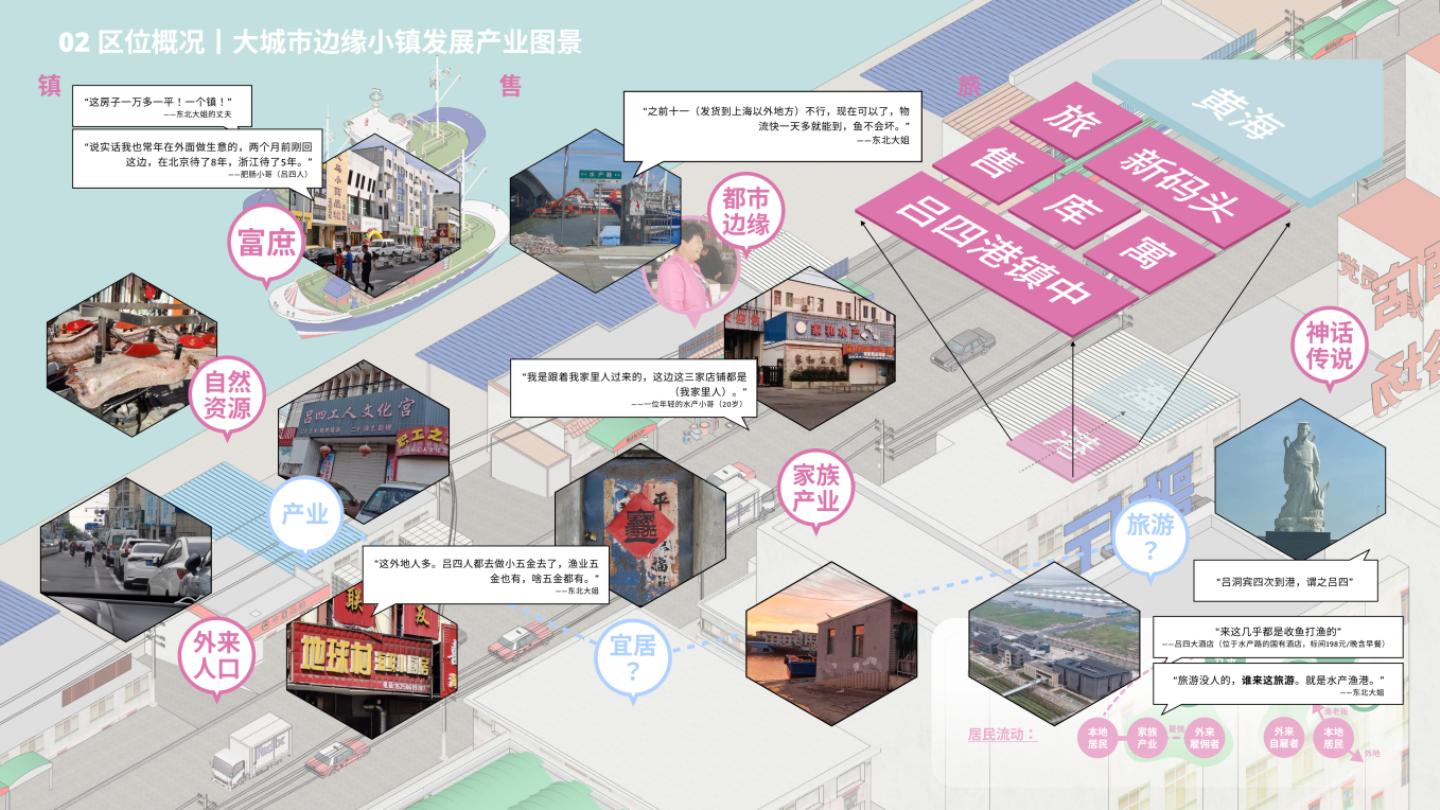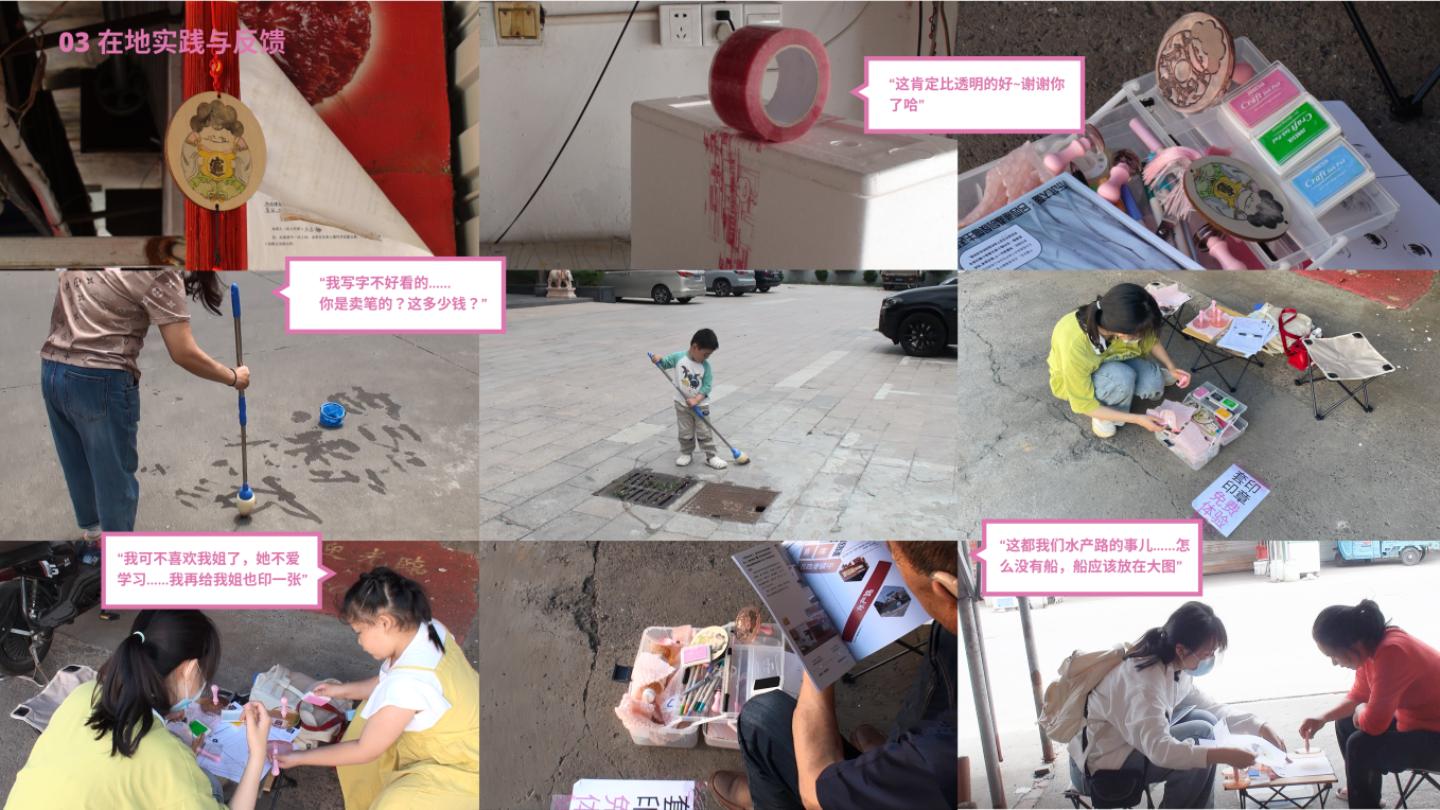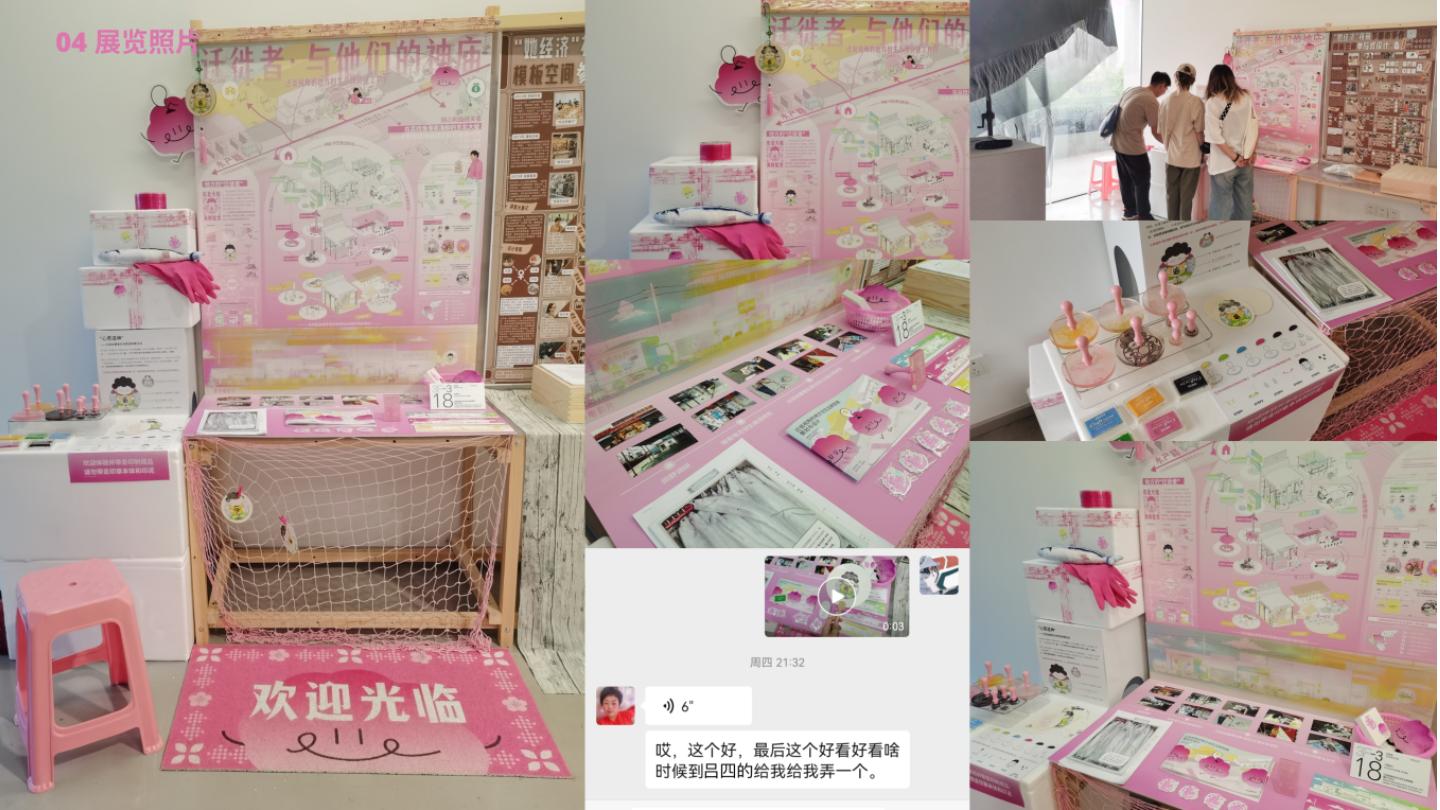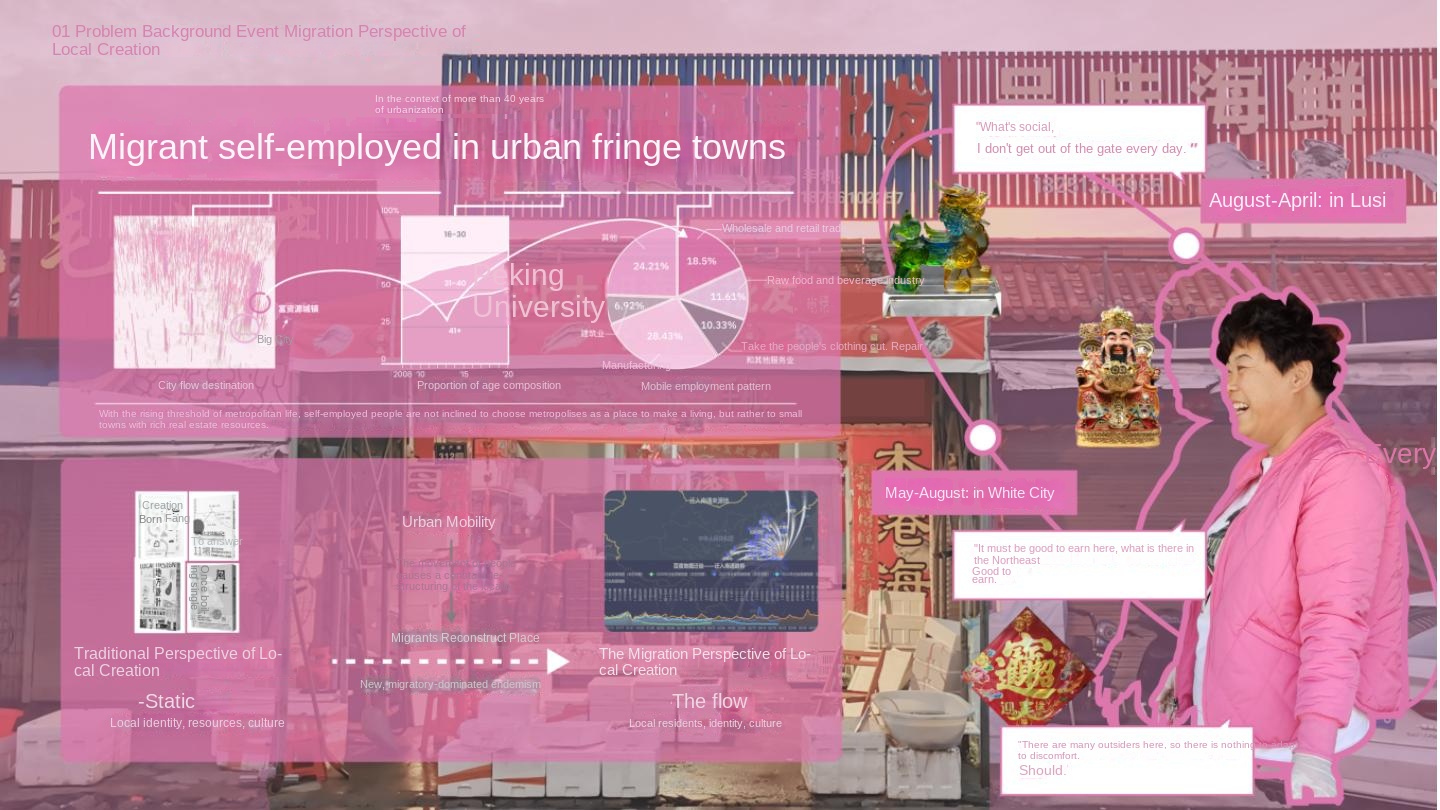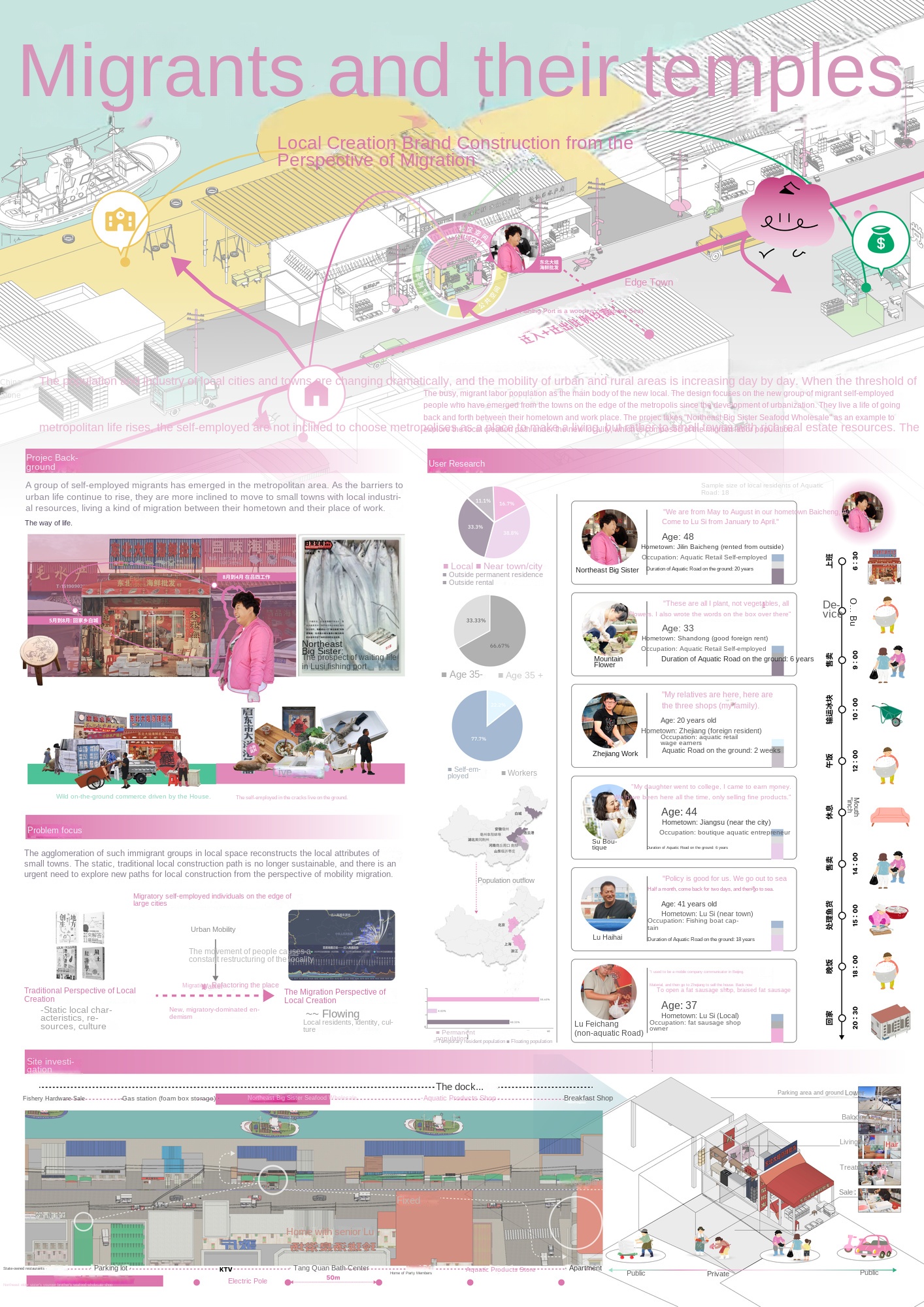
Scheme Drawing_1_Research Background and Investigation in the Field
This drawing describes the new local construction path from the perspective of urban mobility, focusing on the new migrant self-employed groups on the edge of large cities and the structure of local sites.
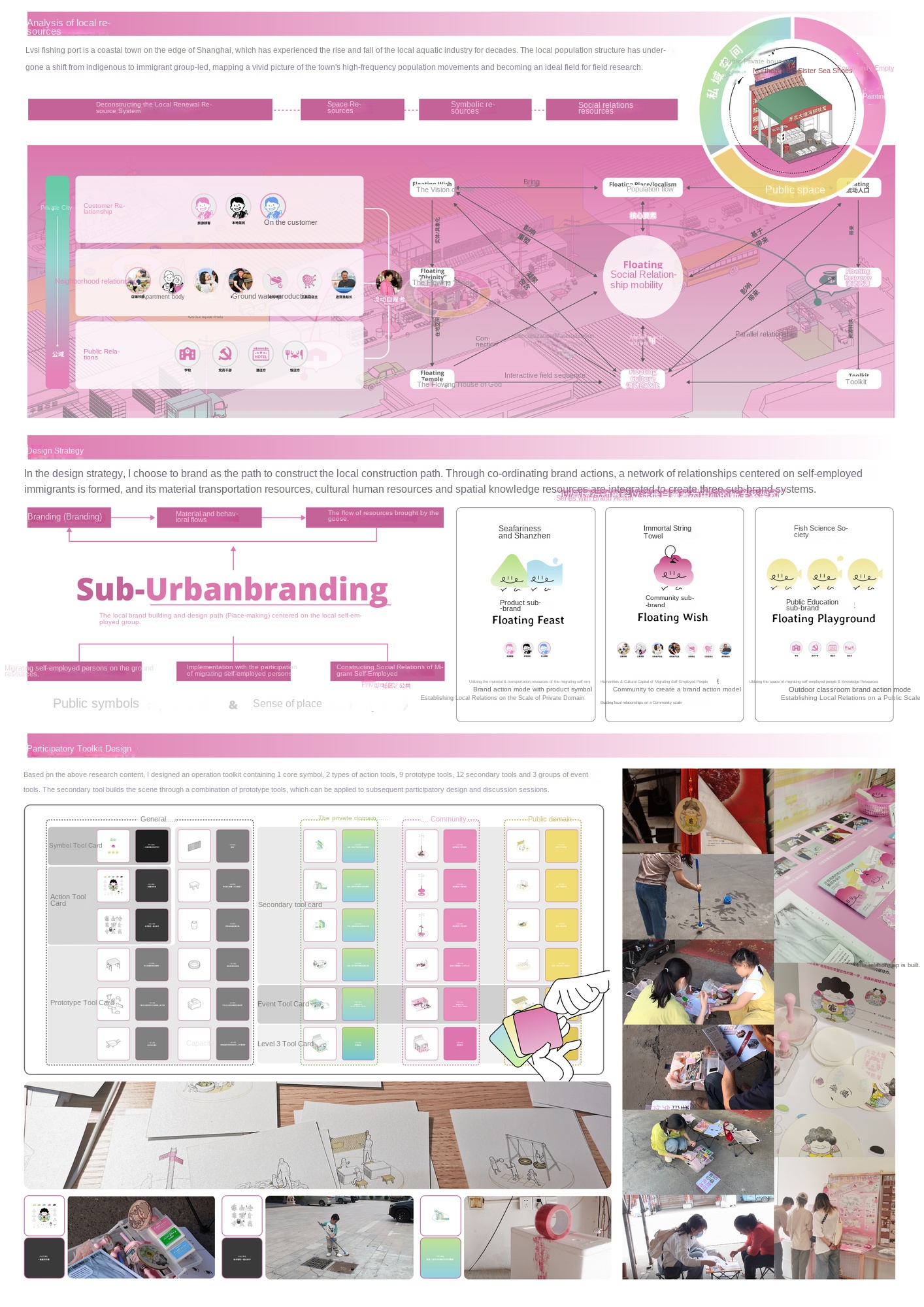
Scheme Drawing_2_Design Strategy and Toolkit System
The drawing combs the integration path of local resources from the perspective of migration, and puts forward the path of local brand construction and three sub-brands of private domain, community and public domain, which is combed in the form of participatory card toolkit and accompanied by real pictures of local practice.
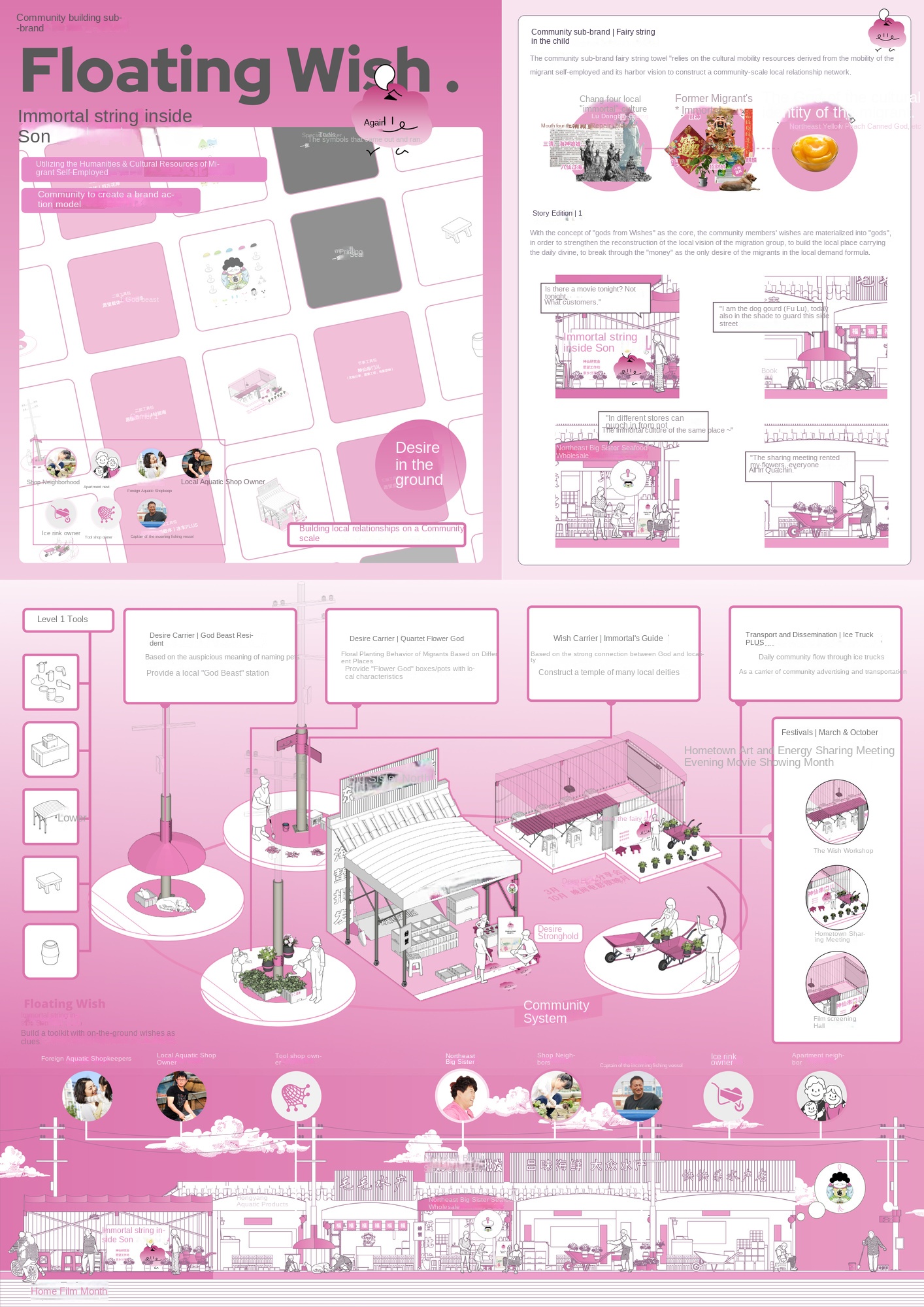
Scheme Drawing_3_Community Sub-brand "Immortals visiting"
This drawing mainly introduces the building elements and story version of the community sub-brand.
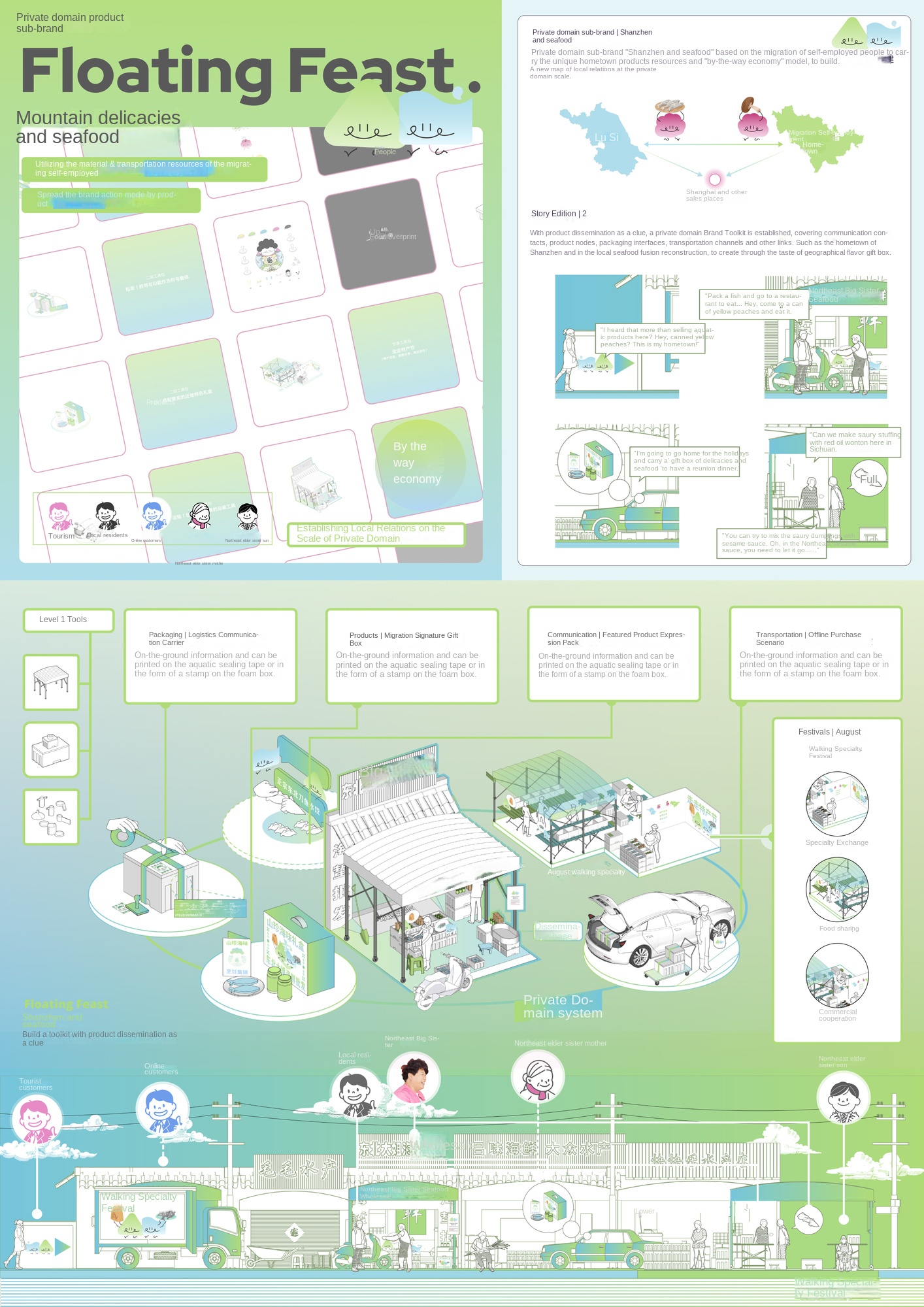
Scheme Drawing_4_Private Sub-brand "Shanzhen and Seaftoo"
This drawing mainly introduces the building elements and story version of the private domain sub-brand.

Scheme Drawing_5_Public Domain Sub-brand "Fish Making Society"
This drawing mainly introduces the building elements and story version of the public domain sub-brand.
Supplementary materials (Note: detailed scheme is presented in the drawings)
This material complements important information not presented in the drawings: including the academic background of the research problem (the disunity of people and land in the context of mobility), the real estate map of the project site (Lusi Fishing Port), offline practice and feedback, and the physical map of the exhibition.
The design pays attention to the new group of migrant self-employed people who have emerged from the towns on the edge of the metropolis since the development of urbanization. After the threshold of life in big cities was raised, they moved to small towns rich in real estate resources, and lived a life of commuting between their hometown and work. The large number of small towns moving in and out has also shaped the special local characteristics-local characteristics that are not completely constructed by local people and local culture.
The project takes the "Northeast Big Sister Seafood Wholesale" of the real Lusi Fishing Port in Jiangsu Province as the prototype, combs the construction path of local brands through systematic resource integration, and constructs the design scheme of the construction of private, community and public sub-brands, which will be located in the local self-employed labor space, the design explores the local creation path under the new locality with the migrant labor population as the main body and constructs the practice-based site construction toolkit system, which responds to the problem of local creation from the perspective of migration.
The origin of the 1. project is the "disunity of people and land" under the background of urbanization in small towns in China"
The project originated from the shop sign of "Northeast Dajie Seafood Wholesale" I saw in Lv Si Fishing Port, a small aquatic town on the edge of the Yangtze River Delta. With the fishing season, the northeast elder sister lived a migratory life in Lusi from August to April and in her hometown Baicheng from May to August, while almost all the foreigners lived such a migratory life on the aquatic products road, from Lianyungang, Anhui, Hubei, Henan......
The wild commercial landscape of aquatic products constructed by these 'migrants' provides the basis for the development of the small town economy with population outflow, and the large number of small towns moving in and out also shapes the special locality-the local characteristics that are not completely constructed by the local people and local culture. What people need in this special locality, what these people can bring to the place, and even what they can bring to their hometown are the issues of local creation from the perspective of migration in China.
The 2. project process is based on in-depth research in Chinese cities and towns.
Through one year's in-depth contact with the new group of migrant self-employed people who have emerged in the cities and towns on the edge of the metropolis. A total of 18 people were interviewed in depth and more than 50000 words were written. The field and design ethnography of migrants with Northeast Dajie as the core was sorted out, and the resources of local space, symbols and social relations of self-employed migrants were sorted out.
This long-term physical experience prompted me to grasp the empathy in a certain depth, different from the past concept-oriented drawing design, and completed the "specific design" (Specific design) closely related to users and their places, accompanied by on-site experimental demonstration. Integrate the cultural connotation of the migrants themselves into the local construction of contemporary China.
3. project results-based design performance with Chinese characteristics
The project takes the "Northeast Big Sister Seafood Wholesale" of the real Lusi fishing port in Jiangsu as the prototype, and carries out participatory design of the space in the form of local brand building. The design uses the material transportation resources, cultural resources and spatial knowledge resources of the migrant self-employed to construct three sub-brands from the private domain to the public domain: the product sub-brand "seafood and Shanzhen", the community sub-brand "fairy visiting" and the public education sub-brand "fishing society".
The design is fully based on the previous ethnographic content and presents the design details with Chinese characteristics. For example, the community sub-brand "Immortals visiting the door" is actually based on the cultural customs such as the God of Wealth in Chinese culture, and based on the simple concrete local wishes of the working people such as "gods are generated from wishes", it will show more local wishes based on various local cultures, and pull cultural flow into the community space to build daily temples. In addition, some design paths also give full play to the advantages of socialism with Chinese characteristics. For example, the public domain sub-brand "Fishing Society" is based on the full trust of the migrant self-employed in the research to the local government, combined with Qidong school-based curriculum resources, self-employed temporary space resources, to jointly build an outdoor classroom that reflects local characteristics.
Work link: https://mp.weixin.qq.com/s/4RvTgwQExPk9yMf-67XaDg
The author is from the International School of Design and Innovation of Tongji University, majoring in environmental design, and is currently studying service design at the Politecnico di Milano. The research focuses on community brand, urban renewal, local creation and other fields, focusing on interdisciplinary practice, collaborative design and participatory design under the background of urbanization. He has won the national scholarship, the first place in the European Student Service Design Challenge, the outstanding graduate, the outstanding graduation design, the national innovation and entrepreneurship challenge, the Asian design year award, etc., and participated in the publication of 4 papers in the fields of community construction, urban renewal and collaborative design.







